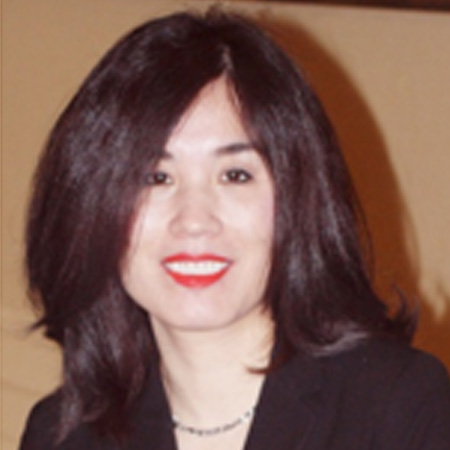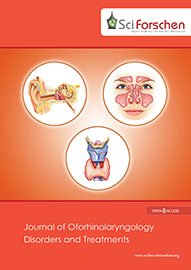
Associate Professor of Oregon Hearing Research Center
-
Oregon Hearing Research Center
Oregon Health & Science University
3181 SW Sam Jackson Park Road
Portland, USA
Phone: 503 494-2997
Email: shix@ohsu.edu
Education
Institution and Location |
DEGREE |
Year |
Field of Study |
Henan Medical University |
M.D. |
1986 |
Medicine |
Shanghai Second Medical University |
M.S. |
1994 |
Auditory Physiology (Cochlear Microcirculation) |
Henan Medical University |
Ph.D. |
1997 |
Auditory Physiology & Molecular Biology (Cochlear Microcirculation) |
Biography
Xiaorui Shi is an Associate Professor with the Oregon Hearing Research Center. Dr. Shi joined OHSU in 2005. Xiaorui Shi is Associate Professor in the Department of Otolaryngology-Head and Neck Surgery, Vice Director of the Institute of Microcirculation, Chinese Academy of Medical Sciences & Peking Union Medical College, Beijing, China. Xiaorui Shi research interests includes Regulation of cochlear blood flow,Cellular mechanisms controlling the integrity of the blood-labyrinth-barrier,Vascular pathology in aging, loud sound, and inflammatory induced damage to the ear,Vascular remodeling and angiogenesis after damage.
Research Interest
Normal hearing requires the blood supply to the cochlea is well-regulated and the blood-labyrinth barrier tightly-controlled. The structural integrity of the microvasculature is critical to its function in maintaining the supply of oxygen, nutrients, and hormones to our ears, and for removing toxins and metabolic waste products. Insufficient blood supply to the ear is among the primary causes of age-related and noise-induced hearing loss, and is implicated in autoimmune inner ear disease and several genetically-linked hearing diseases as well. The aim of my lab is to obtain a better understanding of the mechanisms by which blood flow to the ear is regulated, blood-labyrinth barrier is controlled, and compromised vasculature is restored after damage. Ultimately, our goal is to develop new treatments, ameliorate damage, and improve the quality of life for people who suffer from vascular dysfunction related hearing loss.
- Regulation of cochlear blood flow
- Cellular mechanisms controlling the integrity of the blood-labyrinth-barrier
- Vascular pathology in aging, loud sound, and inflammatory induced damage to the ear
- Vascular remodeling and angiogenesis after damage
Scientific Activities:
Positions and Honors
1999 |
Clinical Associate Professor, Department of Otolaryngology, General Hospital of the CPAPA, Beijing, China. |
1999-2003 |
Research Associate,OHRC, Oregon Health & ScienceUniversity, Portland, OR |
2003-2004 |
Senior Research Associate, OHRC, Oregon Health &Science University, Portland, OR |
2004-2005 |
Staff Scientist, OHRC, Oregon Health &Science University, Portland, OR |
2005-2010 |
Assistant Professor, OHRC, Oregon Health & Science University, Portland, OR |
2008-2010 |
Adjunct Professor, Adjunct Professor, Vice Director, Institute of Microcirculation, Chinese Academy of Medical Sciences & Peking Union Medical College, Beijing, China |
2010- Present |
Associate Professor, OHRC, Oregon Health & Science University, Portland, OR |
Honors
1997 |
Excellent PhD Student Award, Henan Medical University, Zhengzhou, China |
1997 |
Award for Best Presentations in Science, Beidaihe, China |
1998 |
Second Place Scientific Progress Award, Beijing, China |
1999 |
Second Place Scientific Progress Award, Beijing, China |
1999 |
Annual Excellent Doctor Award, CPAPA Hospital, Beijing, China |
2016 |
OHSU Technology Transfer & Business Development Awards, USA |
Publications
- Shi, X.R., Ren, T., Nuttall, A.L. The electrochemical and fluorescence detection of nitric oxide in the cochlea and its increase following loud sound. Hear Res. (2001) 153(1-2):23-31.
- Shi, X.R., Nuttall, A.L. Expression of adhesion molecular proteins in the cochlear lateral wall of normal and PARP-1 mutant mice. Hear Res. (2007) 224:1-14.
- Shi, X.R., Gillespie, P.G., Nuttall, A.L. Na (+) influx triggers bleb formation on inner hair cells. Am J Physiol Cell Physiol. (2005) C1332-41.
- Shi, X.R., Gillespie, P.G., Nuttall, A.L. Apical phosphatidylserine externalization in auditory hair cells. MolMembr Biol. (2007) 24(1):16-17.
- Shi, X.R., Han W, Yamamoto H, Tang W, Lin X, Xiu R, Trune DR, Nuttall AL (2008). The cochlear pericytes. Microcirculation,15:515-29. PMC3647450.
- Dai M, Nuttall A, Yang Y, Shi X.R. (2009). Visualization and contractile activity of cochlear pericytes in the capillaries of the spiral ligament. Hear Res. 254(1-2):100-7. PMC2757277.
- Min, D., Shi, X.R. (2011). Fibro-vascular coupling in control of cochlear blood flow. PLoS ONE, 6(6):e20652. PMC3106013.
- Dai, M., Yang, Y,Shi,X.R. (2011). Lactate dilates cochlear capillaries via type V fibrocyte-vessel coupling signaled by nNOS. Am J Physiol Heart CircPhysiol, 1(4):H1248-54. PMC3197350.
- Shi, X.R. (2010). Resident macrophages in the cochlear blood-labyrinth-barrier and their renewal via migration of bone-marrow-derived cells. Cell Tissue Res, 342(1):21-30. PMC20838812.
- Zhang, W., Dai, M., Fridberger, A., Hassan, A., Degagne, J., Neng, L., Zhang, F., He, W., Ren, T., Trune, D., Auer, M., Shi, X.R. (2012). Perivascular-resident macrophage-like melanocytes in the inner ear are essential for the integrity of the intrastrial fluid-blood barrier.Proc Natl Acad Sci U S A, 109(26):10388-93. PMC3387119.
- Neng, .L, Zhang, F., Kachelmeier, A., Shi, X.R. (2013). Endothelial cell, pericyte, and perivascular resident macrophage-type melanocyte interactions regulate cochlear intrastrial fluid-blood barrier permeability. J. Assoc Res Otolaryngol, 4(2):175-85. PMC3660918.
- Shi, X.R (2016). Pathophysiology of the cochlear intrastrial fluid-blood barrier. Hear Res. Aug;338:52-63.
- Yang, Y., Dai, M., Wilson, T.M., Omelchenko, I., Klimek, J.E., Wilmarth, P.A., David, L.L., Nuttall, A.L., Gillespie, P.G., Shi, X.R. (2011). Characterization and analysis of the cochlear strial vasculature proteome and the role of Na+, K+-ATPase in blood labyrinth barrier. PLoS ONE; 6(1):e6547. PMC3031570.
- Neng, L., Zhang, W., Hassan, A., Zemla, M., Kachelmeier, A., Fridberger, A., Auer, M., Shi, X.R. (2013). Isolation and culture of endothelial cells, pericytes and perivascular resident macrophage-like melanocytes from the young mouse ear. Nat Protoc, Mar 14; 8(4):709-20. PMC3740596.
- Zhang, F., Dai, M., Neng, L., Zhang, J.H., Zhi, Z., Fridberger, A., Shi, X.R. (2013).Perivascular macrophage-like melanocyte responsiveness to acoustic trauma—a salient feature of strial barrier associated hearing loss. FASEBJ, May 31. PMC3752533.
- Dai, M, Yang, Y., Omelchenko, I., Nuttall, A.L., Kachelmeier, A., Xiu, R., Shi, X.R. (2010). Bone marrow cell recruitment for repair of acoustically damaged blood-labyrinth-barrier mediated by a local iNOS/SDF-1α signal pathway. Am J Path, 177(6):3089-99. PMC2993278.
- Zhang J, Chen S, Hou Z, Cai J, Dong M, Shi, X.R. (2015). Lipopolysaccharide-Induced Middle Ear Inflammation Disrupts the Cochlear Intra-Strial Fluid-Blood Barrier through Down-Regulation of Tight Junction Proteins. PLoS ONE. Mar 27; 10(3):e0122572. PMC4376743.
- Neng, L., Zhang, J., Yang, J., Zhang, F., Lopez, I. A., Dong, M., Shi, X.R. (2015). Structural changes in the strial blood–labyrinth barrier of aged C57BL/6 mice. Cell Tissue Res. Mar 5.

